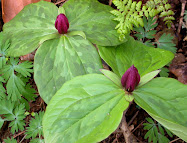The day was perfect and Cindy and I were on a bug safari in
Claremont Wilderness Park when we spotted this Bee Fly. I think it was a Conophorus fenestratus but
perhaps it should have been called a “frustrateus” since it was so hard to
identify. As you might recall Cindy is the creator of the blog BugSafari.
While looking for insects on dead logs I found a cup fungi.
Don’t know what it is yet. I wish I had more
mushroom field guides with me, I only brought the small one.
On the log was one of my best finds of the day, a Liometopum
occidentale (California velvety tree ant).
I had never seen an ant with marking like these but there were very hard
to photograph. They rushed about so much
and eventually started biting me. Cindy suggested
we give them some water since we were in a dry area. I wouldn’t have ever thought of that and it
is something I will need to remember as I travel into more desert regions. Well they just ignored that so she pulled out
an energy bar and gave them something sweet.
I don’t think they ate any but they were curious and I was able to get
this good photo of one checking it out.
We stopped doing battle with the ants and continued on up the hill
where I found a familiar fern, well it was not really familiar but it was a
polypodium species and we have them in West Virginia. This was a Polypodium califomicum (California
Polypody).
One of the seepage area had a couple nice insects. First was
Erynnis propertius (Propertius Duskywing).
And later a Ischnura denticollis (Black-fronted Forktail).
Both were new to me. At first we only
caught a glimpse of the forktail but there are so territorial I knew it would
come back later so we went on and sure enough it was there when we came back
by.
On my big adventure I have been enthralled by lizards, even with
the most common Western Fence Lizard. Isn’t it handsome and very cooperative? There tendency is to freeze when spotted so
they make good photo subjects, not even twitching. But then they dash off at lightning
speed.
One of the most beautiful creatures we found was a Limenitis
lorquini (Lorquin's Admiral).
Cindy has an uncanny ability to spot the tiniest insect on a
leaf of grass and I was getting so frustrated and not finding much, even though
I can spot insects equally as well. Then
I realized that I was not familiar with the leaves and grasses we were seeing
so the odd insect on a leaf doesn’t pop out. She likened it to a proofreader
who is so familiar with the shapes of words that when a word is misspelled it
almost pops off the page. So as we
continued back to the car she casually says, “There is a red spider over there”.
Well….it WAS on her side, and like I
said she has an eye for insect spotting. Was I jealous? Sure wouldn't you be. She is a generous teacher and I really learned a lot from her on
this outing.
Phidippus johnsoni (Red backed jumping sipder)
We sort of ended on a sad note when we found this baby rattler
tossed to the side of the trail. Besides
being a walking trail it is also a bike trail and it looks like this one had
the marks of a tire track across its’ body.
You can see it has one button, the start of a rattle.
It was belly up but so we turned it over for a better look.
We
both touched it and it touched us as well.






























































+DSCN5800+for+blog.jpg)



